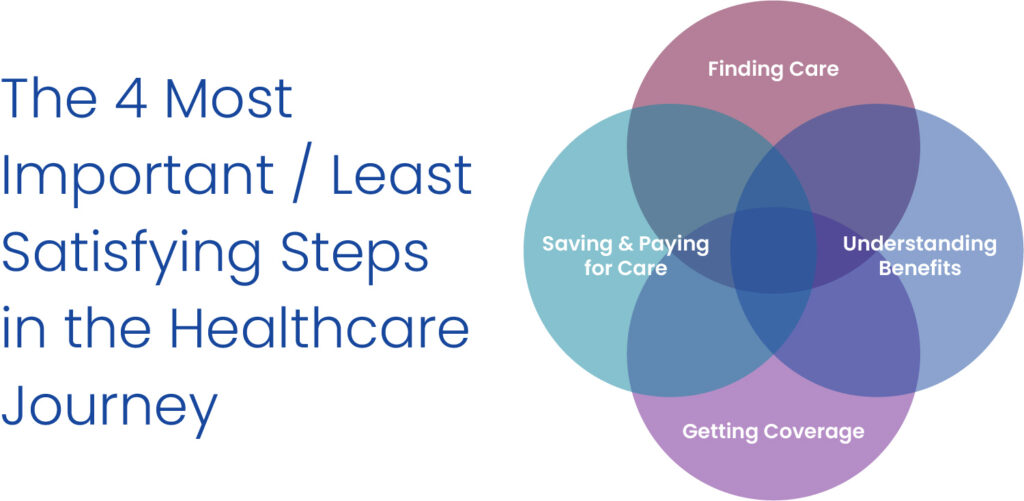A recent McKinsey report looked at ways consumer centricity is resetting expectations of consumer healthcare journeys, and importantly, whether these journeys can be significantly improved in terms of both care and cost outcomes.
This study reveals that consumers are placing a higher priority on their wellness, while continuing to express widespread frustration with the healthcare system.
Key Elements of the Study
Researchers examined the overall journey, evaluating consumer experiences across eight key elements: getting coverage, understanding benefits, finding care, receiving care, following up with providers, filling and managing prescriptions, managing own care, and saving and paying for care. The report also looked into the cost, impact and ripple effect of care deferrals, as more patients delay care, even for serious conditions.
Each Step of the Journey Takes a Toll
Overall, consumers indicate that four healthcare journeys — getting coverage, understanding benefits, finding care, and saving and paying for care — are of high importance yet deeply unsatisfying.

From the struggle of finding care to actually receiving care, the healthcare journey remains fraught with gaps and challenges. To overcome some of these difficulties, highly effective virtual primary care providers can provide immediate and easy access, equitably to all patients, even those in underserved groups such as non-English speakers or residents in rural settings with fewer brick and mortar facilities and providers.
What Happens When We Wait?
The McKinsey study and other recent research demonstrate that care deferrals have serious consequences for consumers and health systems alike. Yet with the challenge of navigating the current system, it is no wonder that nearly a quarter of US consumers have reported deferring healthcare.
Beyond the navigation difficulty, deferring care in the post-pandemic world happens for a number of reasons. There’s a lack of satisfaction with care and cost. There are consumers who may come from a variety of cultures and backgrounds, for whom finding care providers is more difficult. Many people face a lack of qualified providers who can help with their needs, especially around mental health issues.
But delaying is bound to exacerbate problems. “Consumers who reported they have deferred care suffer more [...] from existing health issues or mental-health challenges: approximately 80% reported chronic conditions.” It just gets worse: consumers deferring care receive less routine preventive care, including flu vaccinations and annual wellness visits.
When deferrers finally seek care it’s more expensive. 13% of deferrers reported an ER visit and 16% reported using urgent care.
Ultimately patients who defer care are usually engaging with the least satisfying and most costly care sites when they ultimately seek care; these negative experiences simply reinforce the cycle of care deferral.
What’s the cost?
It’s estimated that each year approximately $8.3 billion is spent in the U.S. on emergency care that could be provided in another care setting.The largest driver of avoidable emergency-care spending is unnecessary emergency department (ED) use for mental illness ($4.6 billion) and hypertension ($2.3 billion).
Resetting the Care Journey
The opportunity for an extraordinary reset is here today. Establishing a more effective care delivery strategy that includes virtual primary care can help consumers connect immediately with a live physician, creating a new intersection between the moment of need and the point of care. Let’s talk more about this in the coming months!





